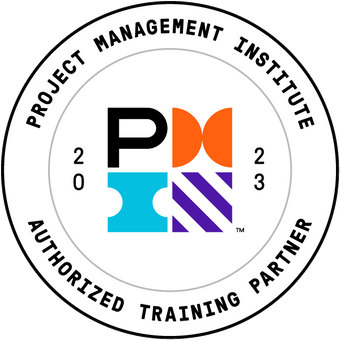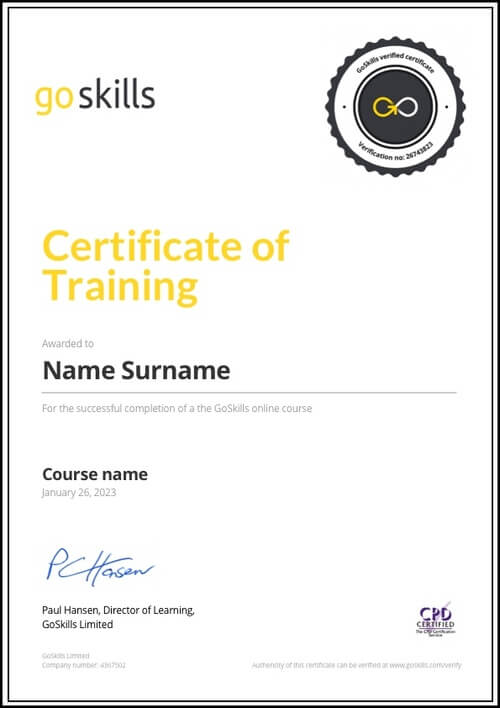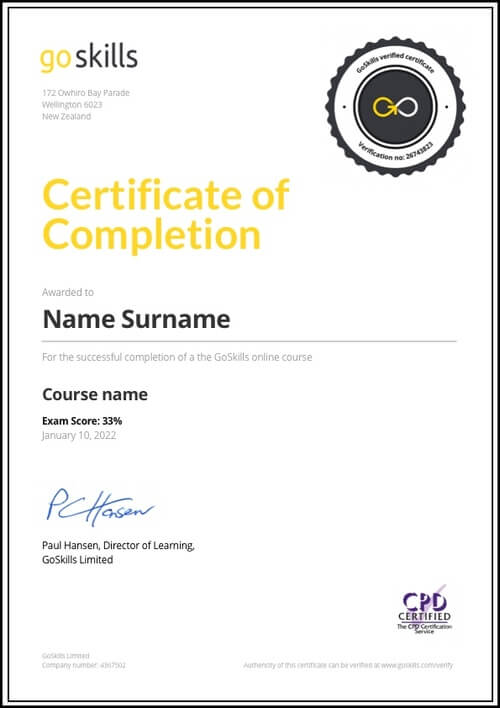Features
Premium video tutorials
Award-winning instructors
Personalized learning
Get certified
Learn at your own pace
Mobile (learn on-the-go)
Unlimited tests and quizzes
Regularly updated content
Overview
Prepare to ace the Project Management Institute’s Agile Certified Practitioner exam with GoSkills PMI-ACP® training online.
In this online course, you will become well-versed in industry-leading Agile Scrum approaches while earning the required contact hours for certification with PMI.
Demonstrating you have mastered the Agile Scrum methodology is a marketable way to fast-track your career and impress your employer. The talents of accomplished Agile Scrum Practitioners are essential in many industries including software development, marketing, education and design.
This PMI-ACP® training online will prepare you for certification and help you get recognized for your expertise in agile principles.
Highlights:
- 45 lessons.
- Understand the roles of Scrum Master, Product Owner, and Scrum Team.
- Know the steps in planning and executing an Agile/Scrum project.
- Understand the organizational impact of using Agile/Scrum for project management.
- Learn the principles of Agile and how they are embedded in the Agile/Scrum methodology.
- Recognize the differences between Sequential, Concurrent, and Agile project management and know when to use each approach.
- Understand how to use the Agile/Scrum tools of Story Cards, Product Backlog, Scrum Boards,and Burn-down Charts.
- Refers to the Project Management Institute's Agile Certified Practitioner Handbook.
- Earn 22.5 contact hours or PDUs toward your project management education for certification with PMI.
Once enrolled, our friendly support team and tutors are here to help with any course related inquiries.

- 720p
- 540p
- 360p
- 0.50x
- 0.75x
- 1.00x
- 1.25x
- 1.50x
- 1.75x
- 2.00x
Summary
Instructor
Syllabus
Project Management Approaches Free Lesson
1
Project Management Methodology
Agile/Scrum is a project management methodology. This means that it provides a set of tools and processes that can be used to organize and manage the project activities.
2
Sequential Methodology
A sequential project management methodology is a traditional approach to project management. It minimizes risk, but this conservative approach can be lengthy and expensive.
3
Concurrent Methodology
The concurrent project management methodology is a collaborative approach. It can significantly accelerate a project as compared to the sequential approach, but it is much more difficult to project manage.
4
Agile/Scrum Methodology
The Agile/Scrum project management methodology is an iterative approach that requires fewer resources than other approaches.
5
Project Management Methodology Comparisons
The three approaches presented are three very different ways of managing a project. Understanding the differences will enable a business to select the best approach for their projects.
6
Agile Approaches
Agile is a set of principles. There are many project management methodologies that are incorporating these principles. Scrum is currently the most popular.
PMI-ACP Certification Free Lesson
1
PMI-ACP® Certification – Requirements and Application
The Project Management Institute (PMI) offers a certification, Agile Certified Practitioner.
2
PMI Agile Certified Practitioner Exam Preparation
The PMI-ACP® examination is a serious and difficult element of earning the PMI-ACP® credential. The 120 question, proctored exam must be completed within three hours.
3
PMI-ACP® Agile Domains
The PMI-ACP® Agile domains are a summary of the Agile principles that will make up the body of knowledge tested on the PMI-ACP® exam.
4
PMI-ACP® Agile Tools
The PMI-ACP® Agile tools are a listing of the tools and techniques used by the various Agile methodologies to provide project management information and control. Many of these will be found in questions on the PMI-ACP® exam.
Agile/Scrum Elements Free Lesson
1
Agile Culture
The Agile culture is a set of characteristics found in all the Agile methodologies. These characteristics are empowerment, adaptation, and a focus on performance.
2
Agile/Scrum Precepts
The Agile/Scrum is a project management methodology that is in sharp contrast to traditional project management. That is because it starts with a different set of underlying precepts.
3
Sprint – Scrum Process
The Agile/Scrum methodology is a structured project management methodology. It follows a prescribed process that includes Sprints and Scrums.
4
Sprint – Scrum Meetings
Within the Agile/Scrum project management methodology there are a set of meetings that are used to plan and manage the process. Rather than analytical tools, this methodology relies heavily on the use of specific targeted meetings.
5
Story Cards
Story Cards, also known as Product Backlog Items (PBIs) are the technique used for documenting project scope, quality requirements, estimates and priority of the deliverables in an Agile/Scrum project.
6
Product Backlog
The product backlog is the prioritized list of project deliverables.
7
Sprint – Scrum Team
The Scrum Team performs the project work conducted during a Sprint on an Agile/Scrum project.
8
Scrum Master
The Scrum Master is the individual who is responsible for facilitating the Agile/Scrum Sprint process.
9
Product Owner
The Product Owner role is the person on an Agile/Scrum project who is responsible for establishing and explaining the desired project scope.
10
Sprint Controls
Sprint Controls are the project management tools that are used by the Scrum Master and Scrum Team to assess performance.
Process Steps
1
Step 0: Vision
A clear goal or vision is essential to project success. That is as true with Agile/Scrum as with traditional projects.
2
Step 1: Preparing the Product Backlog
Preparing the Product Backlog is the first step in the Agile/Scrum Sprint methodology. It includes creating and prioritizing all the Story Cards.
3
Step 2: Assign Scrum Team
To do the work of the Sprint, a Scrum Team must be assigned.
4
Step 3: Sprint Planning
The Sprint is initiated with a Sprint Planning Session that organizes the work, estimates the effort, and initializes the Scrum Board and Burn Down Chart.
5
Step 4: Sprint Execution
Sprint execution is the actual work of the Scrum team during the Sprint to accomplish the tasks needed to complete each Story in the Sprint Backlog.
6
Step 5: Sprint Demonstration
The Sprint Demonstration is the formal meeting where the Scrum Team demonstrates to the Product Owner the performance of each deliverable that was created during the Sprint.
7
Step 6: Backlog Refinement
The Backlog Refinement is the update of the Product Backlog based upon what has been completed and what has been learned in a recently completed Sprint.
8
Step 7: Sprint Retrospective
The Sprint Retrospective is a lessons learned meeting with a focus of identifying opportunities to improve the performance and management of the next Sprint.
Managing the Backlog
1
Requirements Management
Project requirements management in an Agile/Scrum project is conducted using Story Cards and Backlogs. The list of requirements is variable and is not finalized until the end of the project.
2
Stakeholder Engagement
Stakeholder Engagement is the effort by the Product Owner to communicate with all affected stakeholders in order to identify potential requirements and provide project status.
3
Writing Story Cards
The Product Owner writes the story cards, which document the requested scope of an Agile/Scrum project.
4
Prioritizing the Backlog
The Product Owner must regularly prioritize the Story Cards that make up the Product Backlog and at the beginning of a Sprint he or she must prioritize the Story Cards selected for the Sprint Backlog.
5
Release Planning
Release planning allows the Product Owner to manage the rollout of capability in order to obtain feedback and assess progress.
Managing the Sprint
1
Self-Organizing Teams
Scrum Teams do not rely on assigned project management roles, rather the team organizes and manages itself.
2
Sprint Planning – Part 1
The first portion of the Sprint Planning meeting consists of selecting the Sprint Backlog and clarifying Stories.
3
Sprint Planning – Part 2
The second part of the Sprint Planning meeting is the time when detailed planning takes place by the Scrum Team and the Sprint is actually initialized.
4
Scrum Meetings
During a Sprint, the Scrum Team meets daily at a Scrum Meeting to provide status on progress.
5
Removing Roadblocks
Roadblocks are impediments that prevent the Scrum Team from completing Stories and tasks. The Scrum Master is charged with removing or creating a workaround for the Roadblocks.
6
Sprint Demonstration Planning
Sprint Demonstration Planning ensures that the Sprint Demo meeting appropriately reflects the work accomplished by the Scrum Team.
Managing the Agile/Scrum Methodology
1
Role of Management
Agile/Scrum is an organizational approach to project management and requires buy-in from senior management to be effective.
2
Organizational Alignment
Organizational alignment is the activity needed to ensure the systems and processes within the organization support the Agile/Scrum methodology and do not undermine it.
3
Strategic Alignment
Agile/Scrum projects are often used to implement both product line strategy and operational strategy. They can be used with customer projects – but there are challenges with that approach.
4
Project Selection
Senior management also has the role of selecting projects that are suitable for the Agile/Scrum methodology.
5
Agile/Scrum Challenges
When implementing Agile/Scrum, there are several process and project challenges that most organizations encounter and must be addressed.
6
Agile/Scrum Failure Points
There are common reasons for why an Agile/Scrum implementation initiative will fail. Awareness of these failure points reduces the likelihood that an organization will fall prey to one of these.





